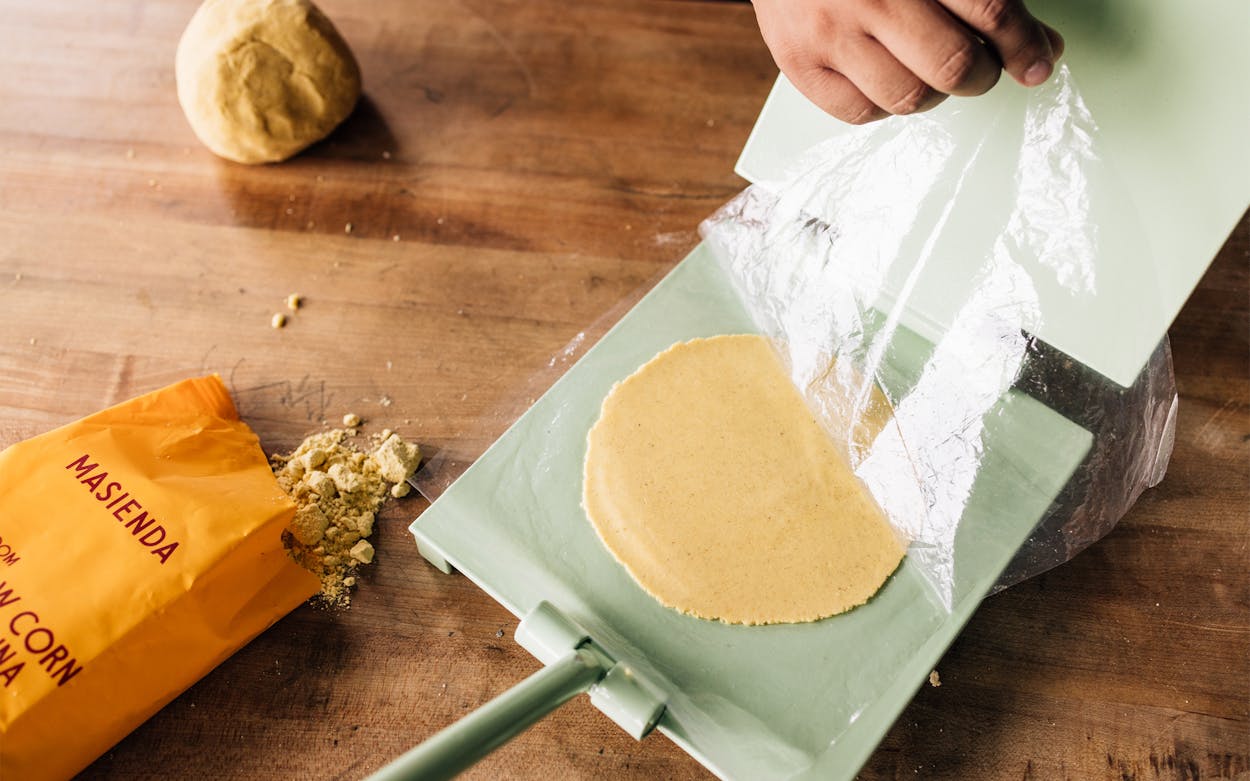With all the natural disasters, political upheaval, and civil unrest saturating media, the last thing I needed was news that Maseca is among the top ten most popular brands used by Gen Z. But that’s exactly what Business Insider reported this week, based on data released by market-research firm Numerator earlier this year.
The company surveyed more than 1,600 consumers and leveraged the data alongside the “verified shopping behaviors of over 5,000 Gen Z buyers.” As the demographic (generally defined as including people born between 1997 and 2012) comes into financial independence, businesses are seeking to better target it. Among Numerator’s findings was that—alongside aluminum-free deodorant and prebiotic soda—commodity corn flour was “purchased by at least 5% of Gen Z buyers” last year.
A few things that likely contribute to this seemingly out-of-place product ranking so high are the generation’s budget savviness, higher Latino population, and ability to be influenced by TikTok. If you search the social media platform for Maseca, hundreds of cooking-tutorial videos pop up. While it’s admirable that Gen Z wants to cook at home more affordably and connect with Mexican cuisine, using Maseca is a potential step backward. My dear Gen Z readers, you can do better. And I’m going to help.
But first, permit me to present a brief overview of Maseca. The large-scale, shelf-stable dehydrated corn flour (also known as masa harina) is the marquee product for Gruma, a company based outside Monterrey, Mexico. Founder Roberto González Barrera launched the product in 1949. It floundered at first. Most home and restaurant cooks had a distaste for tortillas made from powder. Then, thanks to government policies enacted in the 1990s that incentivized the use of corn flour, businesses shifted from making fresh tortillas to using the cheaper commodity of Maseca. Soon after, tastes started to evolve. It was a major boon for Gruma.
Neighborhood tortillerias switched to using Maseca to make their tortillas, and the corn flour grew in popularity. It became more widespread in the United States and other countries, where it remains readily available at big-box retailers, supermarket chains, and independent grocers. Maseca is even used to make tortillas at an overpriced Dallas Mexican restaurant co-owned by former Gruma Mexico CEO (and founder González’s son) Roberto González Alcalá.
Now the just-add-water product is so ubiquitous that it seems to have all but eliminated the craft of nixtamalization. The ancient process of cooking dried corn kernels to craft a filling, nutritious, and sturdy tortilla is the manifestation of millennia of Mesoamerican gastronomic excellence. On the other hand, a tortilla made from Maseca has an overbearing sugary flavor with a long-lasting metallic aftertaste.
Dehydrated corn flour cannot replace the superior taste of nixtamal tortillas—but it doesn’t have to yield awful results. Masienda, a Los Angeles–based company founded in 2014 by Jorge Gaviria, proves just that. Masienda started by supplying non-GMO organic heirloom Mexican corn grown by small farmers to restaurants. It eventually scaled up to offer products for general consumers. Its corn is used at some of the state’s top Mexican eateries, including James Beard Foundation Award nominees Elemi, in El Paso; Tatemó, in Houston, and Molino Olōyō, in Dallas. Today Masienda works with hundreds of farmers across Mexico, in the states of Tlaxcala, Mexico, and Oaxaca, among others. It also sells Mexican-made, handcrafted tortilla presses, comals (in a collaboration with Austin-based Made In), and automated tabletop corn grinders. In late 2019, Masienda released its own masa harina.
The product is available on Masienda’s website in 2.2-pound bags of blue, yellow, white, and red corn flour. The blue, yellow, and white masa versions are currently available on Amazon as well. Each package makes 84 six-inch tortillas. In May, the bags will be available at Whole Foods Markets nationwide. Suffice it to say, Masienda’s masa harina is popular in its own right. It’s also tasty. I use it at home, and I tried it this weekend at El Pastor Es Mi Señor, when the San Antonio taqueria used it for tortillas for lamb barbacoa tacos. The tortillas and the tacos were wonderful.
Gaviria wasn’t as shocked by the news of Gen Z’s affinity for Maseca as I was. On the contrary, he was excited by its implications. “It suggests there is a crescendo building for the category at large,” he told me during a phone conversation. He sees it as proof that there is a vibrant market for his product.
The fact that Gen Z is actively consuming Maseca at home shows Gaviria that these young adults are retracing their connections to their past. Eventually, they’ll seek alternatives to more mainstream products. Maseca, though, is about as mainstream as masa harina can get. In fact, most people use the word “Maseca” to refer to all masa harina. Call it the Kleenex effect. That being so, making fresh tortillas with masa harina—versus buying packaged commodity tortillas—means a better taco night. Gen Z values sustainability and flavor, which, Gaviria says, align with Masienda’s beliefs. With more attention and traction, he sees nothing but promise for Masienda’s masa harina.
So again, Gen Z, I implore you to look for higher-quality versions of the product Numerator claims you love. They’re out there. Masienda’s masa harina is just one of them. In the meantime, as Gaviria quips, “Thank you very much, Maseca; we are more than grateful for your service.”








